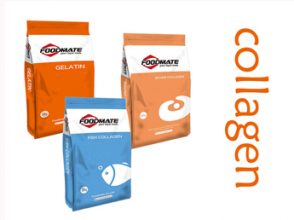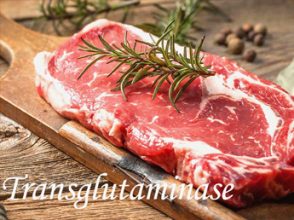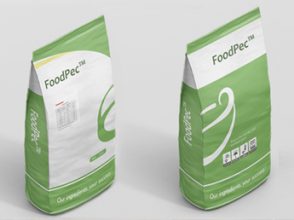The latest report - "The Power of Bakery 2019", shows that three-quarters of shoppers look at products that contain one or more specific nutrients when buying baked goods. Although whole grains and miscellaneous grains have traditionally been the most popular ingredients for consumers, vitamins, minerals, and an increasing number of functional nutrients still attract nearly a quarter of consumers, especially those who want to get from food More nutritious young people.
Bakers are increasingly adding additional nutrients to their product formulas, on the one hand to supplement the trace elements consumed during the baking process, and on the other hand, to target the target population to supplement their daily diets that are not up to the recommendation Related nutrients for intake.

Ⅰ.Explore the best-fortified formula for special situations
(1) "Different age groups and lifestyles have different nutritional needs, so it is important to clearly understand who the target consumer is before developing a concept," said Nathan Pratt, a nutritionist at Kerry Ingredients. "For example, children Sufficient nutrients such as iron, calcium, vitamin A, and vitamin D are needed to maintain optimal growth and development, but often a single diet leads to insufficient nutrition, so many food manufacturers are nutritionally fortifying children's foods. When it comes to adding these targeted nutrients. "
(2) Adding the correct nutrients to the formula in the most effective form can ensure that the added nutrients can achieve the purpose of fortification while minimizing costs. For example, vitamins are sensitive to stress during baking and need to be supplemented with excess nutrients to compensate for the loss of vitamins during processing to the level on the product label.
(3) The nutritional ratio and interaction must also be taken into account. The interaction of ingredients may change the shelf life of the product, or have a negative impact on taste and appearance. For example, minerals such as calcium can disrupt the formation of air bubbles during baking, making bread less fluffy, and so on.
Historically, the purpose of nutrition fortification is to prevent diseases that may be caused by nutritional deficiencies. Nowadays, nutrition fortification is more to help the body achieve the best state by adding nutrients. Bakers have the opportunity to create functional foods that provide a wide range of nutritional benefits, or they can differentiate their products by developing products that target specific health conditions.

Ⅱ. Nutrition fortification needs to follow certain upper and lower limit standards
Now that nutrition fortification has been widely used in food, are there any hard rules? It is understood that the US Food and Drug Administration does not require fortification or concentration of all foods, however, there is still a standard that must be followed for products described as "enriched".
Flour is one of the most common nutritional and fortified foods. In the United States, the federal regulations stipulate five nutrients-folic acid, iron, nicotinic acid, riboflavin, and thiamine, which must be added to fortified flour at the specified levels. At the same time, the regulations provide Content and specifications. Of course, other countries will also set their own fortification standards based on the nutritional needs of the national population.
Specifically, wheat is ground to remove wheat bran and germ, and the endosperm is processed into white flour, which strips away certain vitamins and minerals. The concentration of flour can supplement these nutrients and restore the basic nutrients lost during processing to meet mandatory regulations. However, when adding vitamins and minerals, maintaining consistency is critical. Therefore, in order to meet the minimum requirements and guidelines for flour concentration set by the FDA, factories need to overcome certain variables.
For example, for most adults, the recommended daily intake of vitamin D is 15 micrograms, and the upper limit is 100 micrograms per day, but it is wise and safe to add 10-20 of the daily intake of nutrients %. Because people eat a lot of different foods a day, they don't need to get all their nutritional needs from one food.

Ⅲ. Inventory of cutting-edge technology for baking nutrition fortification
At the annual meeting of the Food Technology Institute and the Food Fair in New Orleans in June this year, many suppliers showed us nutritionally-fortified baked goods.
Among them, WrightGroup showed a ketogenic peanut butter protein bar, which added a series of vitamins and minerals to the protein bar through exclusive microencapsulation technology, and also added microencapsulated omega-3 oil powder and company's unique Some contain 60% medium-chain triglyceride powder.

Watson also showed a potassium-fortified snack bar. The premix used in its prototype contains a lot of vitamins and minerals and claims to be a "good source of potassium." This product uses special microencapsulation technology to cover the salty taste of potassium while adding potassium, and the microcapsule coating can resist the high temperature, high humidity and high acid environment in the process of making rods.
Quintessence Nutraceuticals sells a nutritionally effective extract isolated from rice bran and germ layer. This ingredient is made by a patented hydrolysis and extraction process to ensure that the nutrients extracted from rice have bioavailability and bioactivity. The ingredient supports relevant label claims such as sustainable and 100% non-GMO
Delavau offers a system that reduces sodium and strengthens calcium in baked goods. According to reports, through this fortification technology, three different levels of "good", "excellent", and "glass-of-milk" of calcium in baked goods can be achieved without negatively affecting the sensory experience.
Going with calcium is vitamin D. Vitamin D is also related to bone health and is considered to be a nutrient deficient in nutrition related to certain chronic diseases. Lallemand has developed a new process that enables baker's yeast to produce vitamin D under ultraviolet radiation, thereby providing a natural vegetarian source for vitamin D fortification in baked goods. This type of vitamin D yeast can be used as a concentrate, which is very suitable for industrial bakeries because it can be added to common baker's yeast to co-ferment to enhance nutrition.
Ⅳ.Summary
Baked food as an ideal carrier of nutrients means that fortified foods will remain the main product of the industry and may gain momentum in the future. Among them, vitamins and minerals are typical nutrients because they are usually part of the flour system. According to the current trend of consumers advocating natural health, manufacturing natural nutritional supplements and reasonable addition in baked goods is the development trend of the baking industry.
| Vitamin D | Vitamin A | Ascorbic Acid (VC) 100mesh |
| Vital Wheat Gluten | FoodZyme TG | Sodium Stearoyl Lactylate |
| FoodZyme™ Enzymes | FoodBake™ Improvers | FoodGold™ Baking Ingredients |





